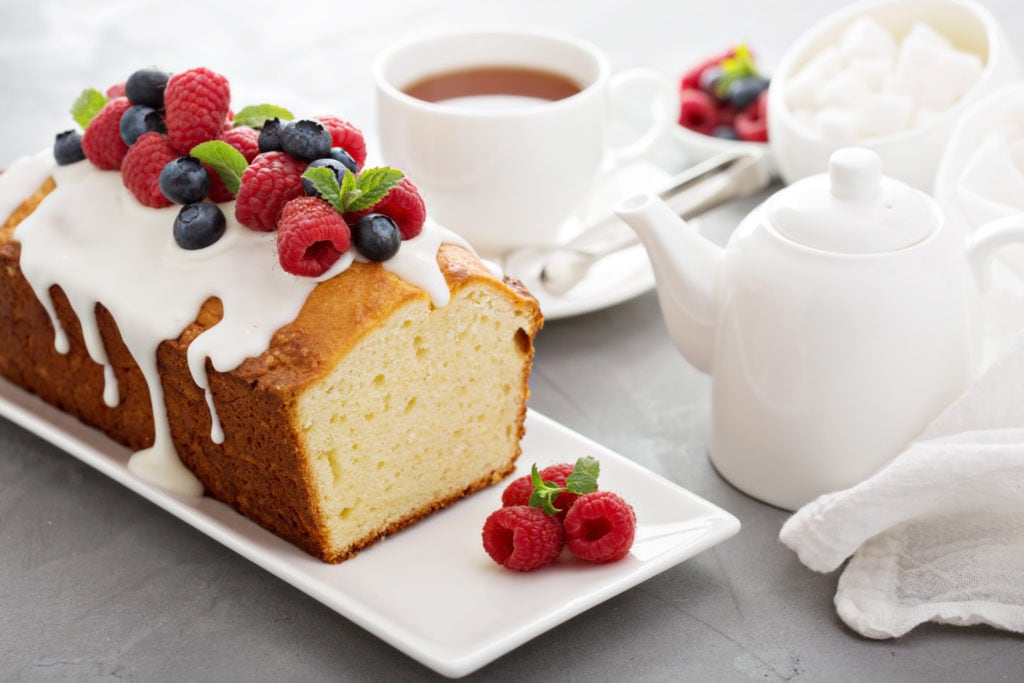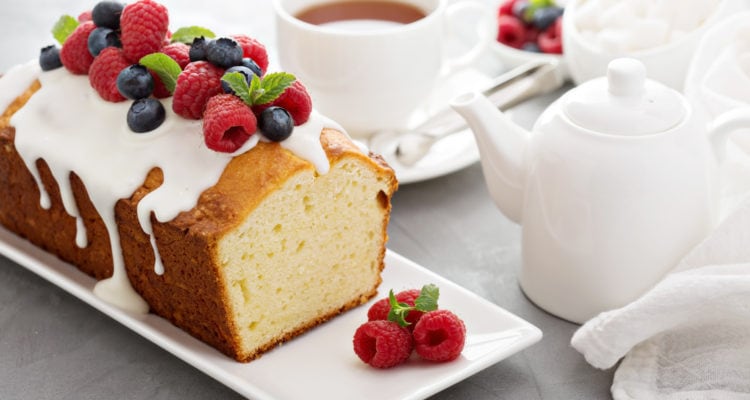
Nothing beats the rich, buttery taste of a homemade pound cake, right?
Traditionally crafted using only a pound each of butter, sugar, eggs, and flour, you’d think that pound cakes would be super simple to make.
Wrong! Despite the small number of ingredients used, there’s a special technique for creating the perfect pound cake. You’ll find that once you’ve got the hang of it, you’ll be baking pound cakes like a pro.
Want to learn the secrets? Here’s how to avoid a baking disaster and celebrate pound cake perfection instead.
1. Prep for Perfection
Ever heard of the phrase ‘mise en place’? This is the concept of ‘everything in its place’ and is key to most baking recipes, but especially for baking pound cake. This is because you must pay special attention to the temperature of your ingredients – but we’ll get to that next.
Read the recipe thoroughly, measure out all your ingredients ready, and collect any equipment you might need ahead of baking.
A great idea is to line up ingredients in the order that they’ll be added into the recipe. This means if you happen to get interrupted (which happens!), you’re less likely to make a mistake or forget to add any ingredients.
Prep your cake pan by greasing it and lining it with parchment paper or dusting with flour.
2. Ensure Ingredients Are at Room Temperature
If you’re wondering how to bake a pound cake that’s full of volume, you’ll need to make sure your ingredients are at room temperature when used in the baking process.
A simple pound cake doesn’t use any chemical leavening such as baking powder or baking soda and relies solely on the air that’s mixed into the batter during the creaming method. This baking process is known as physical leavening.
So, for a successful pound cake, the butter, and eggs, in particular, must be used at room temperature of around 70 degrees F. If the ingredients are too chilled when used, the structure during the creaming process will remain weak, causing the batter to break.
3. Accuracy is Key
When prepping your ingredients, make sure you measure each ingredient carefully. The use of extra sugar or leavening causes a cake to fall during baking, while too much flour used makes it dry.
Use dry measuring cups for flour and sugar for extra accuracy. Pile the flour into the cups and lightly level using the straight edge of an offset spatula or knife.
Make sure the oven’s temperature is precise, too!
4. Brand-Quality Ingredients are Better
While with many recipes it’s fine to use generic brand ingredients when you have a recipe with as few ingredients as a pound cake it’s a different situation. Each ingredient is significantly important for a successful bake, after all.
Often, store brands or cheaper brands of sugar are more finely ground than high-quality brands. This means they yield more sugar per cup, which can cause the cake to fall during baking.
If the package of sugar doesn’t specify ‘cane sugar’, there’s a high chance it may be beet sugar as most store brand sugars are. While many baking professionals claim that beet sugar and cane sugar are pretty much identical, to create a perfect pound cake the use of cane sugar is important.
Likewise, cheaper brands of butter may contain more liquid fat making the cake heavy.
5. Patience is a Virtue
One of the best pound cake tips is to practice patience!
Creaming together the butter and sugar efficiently is a key skill in perfecting a pound cake and while the technique isn’t a difficult one, it does require a level of patience.
You’ll need to beat softened butter at medium speed with an electric mixer until thick and creamy. Depending on the power of your mixer, this can range from taking between one to seven minutes.
Then, you’ll need gradually add sugar, continuing to mix until light and fluffy. These steps are vital for creating a delicious pound cake as they allow the air to whip into the cake batter so it can rise during baking.
You’ll need to practice patience even after the pound cake is baked, too. Once removed from the oven, place the pound cake onto a wire rack and let cool for 10 minutes. This allows the cake to firm so it can be taken from the pan without falling apart.
However, it’s also important not to let the pound cake cool too long in the pan, as this can cause it to become damp and stick to the pan.
6. Don’t Beat to Extreme
When it comes to beating the eggs, be careful not to overdo it. Add each egg one at a time slowly, beating 2 minutes after adding an egg. Even more careful you have to be with beating the flour and milk. Beat just until incorporated, not longer!
Overbeating can cause the batter to overflow the sides of the pan during baking or produce a brittle crust that crumbles and falls from the cake once it cools.
7. Choose the Correct Cake Pan
Baking pound cake like a pro also involves using the right equipment – such as the correct type and shape of the cake pan. Many pound cake recipes call for a tube pan featuring straight, high sides meaning it wouldn’t necessarily fit another type of cake pan like a Bundt pan that’s shallower and more fluted.
Even if both measure the same length in diameter, each pan holds a different amount of batter so choosing the wrong type of pan is an easy way to mess up the baking of a pound cake.
If you’re not sure of the size of a pan, use a cup measure to fill the cake pan with water to learn that way.
And finally, here’s my favorite pound cake recipe. It’s the original pound cake recipe (over 100 years old!). My grandmother used to bake it often. I still remember her rich melt-in-your-mouth cakes!
Ingredients:
- 1 pound (= 2 cups) softened butter
- 1 pound (= 2 cups) cane sugar
- 1 pound (= 8 large) eggs
- 1 pound (= 3 1/3 cups) all-purpose flour
- 2/3 cup milk
- (1 tablespoon vanilla extract)
Directions:
- Preheat oven to 350 F. Grease three 8 x 4 inch loaf pans with butter. Line them with parchment paper or dust with flour.
- Beat the butter until creamy, about 5 minutes. Add gradually the sugar, all the time beating, until light and fluffy. Then, beat more 10 minutes.
- Add the eggs, one at a time, beating well (about 2 minutes) after each addition. Add the vanilla extract, if using.
- Beat in the flour alternately with milk. Mix just until incorporated. Don’t overbeat!
- Pour the batter into the prepared loaf pans. Bake in the preheated oven for 60 minutes, or until a toothpick inserted into the center of the cakes comes out clean. Don’t overbake!
- Remove from the oven. Immediately loosen the cake edges with a knife. Allow to cool in the loaf pans for 10 minutes, then remove from the pans. Strip off the parchment paper (if using parchment paper) and let cool completely on a wire rack.
Ready to Bake the Perfect Pound Cake?
With my special tips and tricks, you’re on your way to baking the perfect pound cake like a pro! I’m passing the baton to you to master the method of the pound cake.
Fancy extending your cake-baking knowledge even further? Here’s how to pipe frosting like the bakery boss that you are!
Happy Baking!


Comments